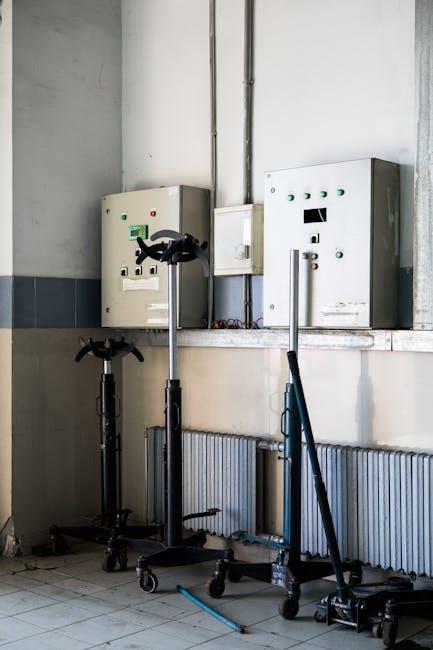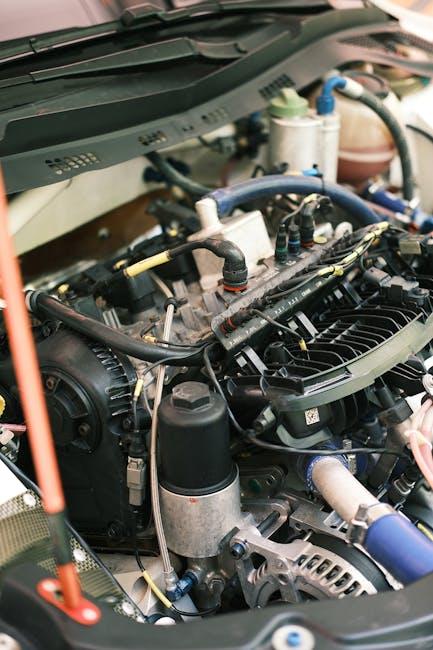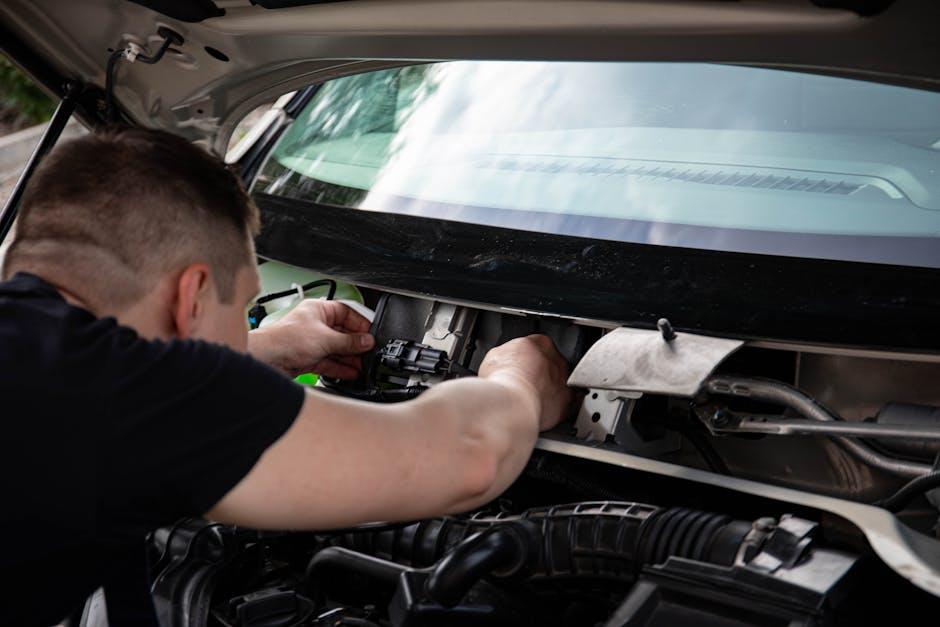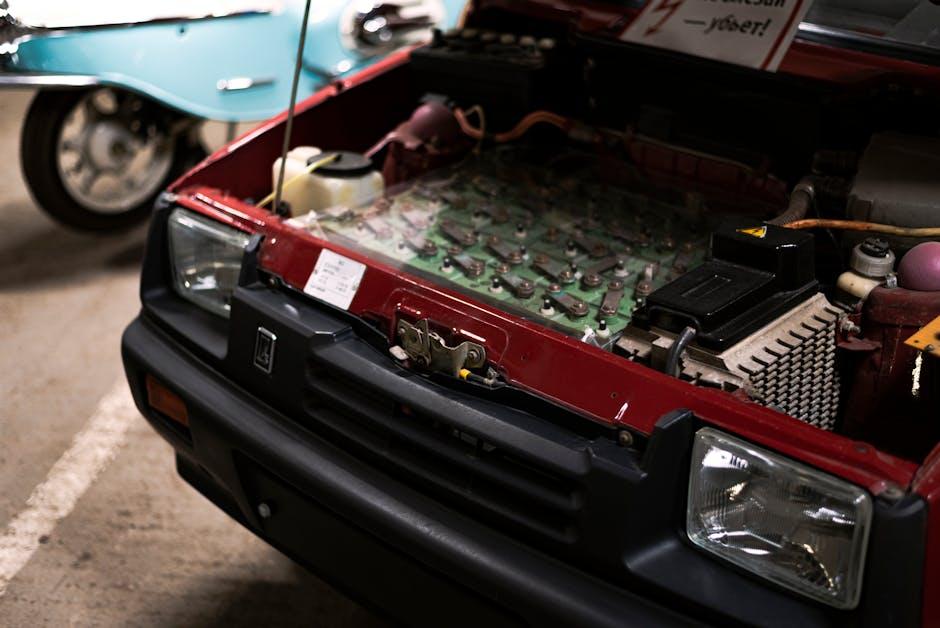Beneath the gleaming surface of your car lies an intricate web of wires—silent conductors that keep everything from your headlights to your dashboard indicators humming smoothly. Yet, when these vital pathways falter, even the simplest drive can turn into a frustrating puzzle. Knowing how to check your car’s wiring system isn’t just for mechanics; it’s a skill that empowers every driver to spot potential issues early and keep their vehicle running safely. In this article, we’ll unravel the basics of automotive wiring inspection, guiding you through the steps to understand, troubleshoot, and maintain this electrical lifeline with confidence.
Table of Contents
- Understanding the Basics of Your Car’s Wiring System
- Identifying Common Wiring Issues and Their Symptoms
- Tools and Equipment You Need for Effective Wiring Inspection
- Step-by-Step Guide to Visually Inspecting Your Car’s Wiring
- Testing Electrical Connections Safely and Accurately
- Maintenance Tips to Prevent Future Wiring Problems
- Q&A
- To Wrap It Up

Understanding the Basics of Your Car’s Wiring System
Your car’s wiring system is essentially its nervous system, responsible for transmitting electricity to all essential components. At its core, it consists of a network of cables, connectors, and fuses designed to power everything from your headlights to the dashboard controls. Understanding the layout and function of these wires can help you spot issues before they escalate. Typically, wires are color-coded to indicate their purpose, such as red for power supply and black for grounding. Familiarizing yourself with your car’s wiring diagram, which you can usually find in the owner’s manual, will give you a clear map to navigate this intricate web.
When inspecting the wiring system, focus on several key areas to ensure everything is in proper working order:
- Check for worn or frayed wires: Damaged insulation can cause shorts or expose live wires.
- Test connection points: Loose or corroded connectors often disrupt electrical flow.
- Inspect fuse boxes: Blown fuses can signal underlying electrical problems.
- Look for signs of overheating: Melted wires or connectors may indicate excessive current load.
| Wire Color | Function | Common Issues |
|---|---|---|
| Red | Power supply | Short circuits from damaged insulation |
| Black | Ground connection | Loose connections causing intermittent failures |
| Yellow | Ignition system | Corroded connectors affecting startup |

Identifying Common Wiring Issues and Their Symptoms
When it comes to your car’s wiring, subtle signs often point to deeper electrical problems. Flickering dashboard lights or intermittent issues with power windows and locks frequently signal loose or corroded connections. Another common symptom is a burning smell, which might indicate overheated wires due to poor insulation or overloaded circuits. These wiring issues don’t just cause annoyances—they can lead to expensive repairs or safety hazards if ignored. Keep an eye out for unusual odors, flickering lights, and inconsistent electrical performance as early warning signs.
Below is a quick guide to some typical wiring glitches and their telltale symptoms:
| Wiring Problem | Common Symptoms |
|---|---|
| Frayed Wires | Intermittent electrical failures, exposed bare wires |
| Corroded Connectors | Dim headlights, slow power accessories |
| Short Circuits | Blown fuses, sparking, system shutdowns |
| Loose Connections | Flickering electronics, unexpected shutdowns |

Tools and Equipment You Need for Effective Wiring Inspection
To thoroughly inspect your car’s wiring system, having the right set of tools is crucial. A reliable multimeter will allow you to measure voltage, resistance, and current, making it easier to detect faulty circuits or broken wires. Pair it with a test light for quick checks of power flow in key wiring points. Don’t forget a set of wire strippers and crimpers for preparing your wiring and making secure connections. Additionally, a wiring diagram specific to your car model is indispensable for tracing circuits and understanding the complex layout beneath your dashboard.
Aside from these essentials, having some auxiliary tools can significantly streamline your inspection process. A digital inspection camera helps in visualizing hard-to-reach wiring areas without disassembling large parts of your car. Keep a circuit breaker finder handy to quickly identify circuits under load, and a selection of electrical tapes and heat shrink tubes ensures safe and professional repairs. Below is a simple guide to essential tools categorized by function:
| Tool | Purpose | Tip |
|---|---|---|
| Multimeter | Measure voltage, resistance, current | Choose a model with auto-ranging for ease |
| Test Light | Quick power flow diagnosis | Use before multimeter to save time |
| Wire Strippers & Crimpers | Prepare and secure wire connections | Match size to wire gauge for clean cuts |
| Inspection Camera | View inaccessible wiring areas | Go for waterproof and flexible heads |
| Electrical Tape & Heat Shrink Tubes | Insulate and protect wiring | Use heat shrink for longer-lasting repairs |

Step-by-Step Guide to Visually Inspecting Your Car’s Wiring
Begin by safely opening the hood and disconnecting the car battery to avoid any electrical hazards. Use a flashlight to get a clear view of your wiring system, paying close attention to the main harnesses running along the engine and firewall. Look for any signs of damage such as frayed insulation, exposed wires, and melted connectors. It’s important to gently feel along the wires as well, checking for areas that feel brittle or unusually soft, which can indicate internal damage or corrosion.
Next, focus on the connectors and junction points. These can often be a hotspot for issues due to moisture buildup or dirt. Clean these areas with electrical contact cleaner if needed, and check for secure connections. Be on the lookout for discoloration or burnt marks that may hint at short circuits. As you inspect, consider using this quick reference table to identify symptoms of common wiring problems:
| Symptom | Possible Wiring Issue |
|---|---|
| Flickering dashboard lights | Loose or corroded connections |
| Burning smell near fuse box | Overheated wires or shorts |
| Non-functioning headlights | Broken or frayed wires |
| Intermittent engine stalls | Damaged wiring harness |

Testing Electrical Connections Safely and Accurately
Ensuring the safety and precision of your electrical inspections begins with the right approach and tools. Always disconnect the vehicle’s battery before engaging with any wiring to prevent accidental shorts or shocks. Use a digital multimeter set to the correct voltage or continuity mode, and handle all probes with steady hands to avoid damaging delicate wires or components. It’s crucial to identify and label each circuit, especially in complex harnesses, to keep track of your testing process without confusion.
Developing a systematic routine enhances accuracy and reduces errors. Consider the checklist below to maintain consistency:
- Check for visible damage such as corrosion or frayed wires
- Test voltage supply at each connection point
- Verify grounding connections with continuity tests
- Confirm the integrity of fuses and relays associated with the wiring
| Test Type | Purpose | Recommended Setting |
|---|---|---|
| Voltage Test | Check power supply in circuits | DC Voltage (20V) |
| Continuity Test | Detect breaks or poor connections | Continuity/Ohms |
| Resistance Test | Measure wire or component resistance | Ohms (Ω) |
Following these techniques will ensure your wiring system is assessed both safely and with accuracy, giving you confidence in your car’s electrical health.

Maintenance Tips to Prevent Future Wiring Problems
Consistent care can save you from unexpected electrical failures. Start by periodically inspecting the wiring harnesses for any signs of chafing or cracks in the insulation. Dirt, moisture, and heat are relentless foes; keeping the engine bay clean and dry will drastically reduce corrosion risks. Use dielectric grease on connectors to ward off oxidation, ensuring a steady flow of electricity without interruptions. Remember, even the smallest amount of debris can cause a short circuit, so attention to detail is paramount.
Implementing a maintenance log can help in tracking the health of your car’s wiring. Below is a simple checklist you can follow to stay ahead of any issues:
- Check battery terminals for corrosion and tight connections
- Inspect fuses and replace blown ones promptly
- Look for loose or exposed wires under the dashboard and near the fuse box
- Test lights and electronic components regularly
- Consult your vehicle’s service manual for wiring diagrams during inspections
| Maintenance Task | Recommended Frequency | Tools Needed |
|---|---|---|
| Wiring Inspection | Every 6 months | Flashlight, insulated gloves |
| Connector Cleaning | Annually | Dielectric grease, contact cleaner |
| Fuse Check | Quarterly | Fuse puller, multi-meter |
Q&A
Q: Why should I check my car’s wiring system?
A: Your car’s wiring system is like its nervous system—it sends signals to make everything work, from lights to the engine. Checking it regularly helps prevent electrical failures, avoid costly repairs, and keep you safe on the road.
Q: How often should I inspect my car’s wiring?
A: It’s good to give your wiring a quick look during routine maintenance—about every 6 months or whenever you notice electrical issues like flickering lights or malfunctioning gadgets.
Q: What tools do I need to check my car’s wiring?
A: Basic tools include a multimeter to test voltage and continuity, a flashlight for better visibility, wire strippers, electrical tape, and possibly a wiring diagram for your specific car model.
Q: Where should I start when checking the wiring system?
A: Begin with the battery and its terminals, ensuring a clean and tight connection. Then inspect fuses and relays, followed by visible wires and connectors for signs of wear, corrosion, or damage.
Q: What are common signs of wiring problems?
A: Look out for burnt smells, melted insulation, exposed wires, intermittent electrical faults, or dashboard warning lights. These symptoms often indicate wiring issues that need attention.
Q: How do I test a wire’s integrity?
A: Use a multimeter set to continuity mode. Disconnect the power, touch the probes to each end of the wire, and listen for a beep or see a reading indicating the wire is intact.
Q: Can I fix wiring issues myself?
A: Minor repairs like replacing a blown fuse, tightening loose connections, or wrapping frayed wires with electrical tape are doable. However, complex issues should be handled by a professional to avoid risks.
Q: What precautions should I take while inspecting wiring?
A: Always disconnect the battery before working on electrical components to prevent shocks or shorts. Work in a well-lit area and avoid touching metal parts that could cause sparks.
Q: When should I see a professional?
A: If you encounter melted wires, burnt smells, persistent electrical problems, or if you’re unsure about any step, consult a certified mechanic or auto electrician to ensure safety and proper repair.
Q: How can I prevent wiring problems in the future?
A: Keep battery terminals clean, avoid overloading circuits with aftermarket electronics, protect wiring from moisture and rodents, and schedule regular vehicle check-ups. Preventing issues is easier than fixing them!
To Wrap It Up
In the intricate dance of wires beneath your car’s hood, knowledge is your most reliable tool. By understanding how to check your car’s wiring system, you not only ensure smooth rides but also safeguard your vehicle’s longevity and your peace of mind. So next time your dashboard flickers or your headlights dim, you’ll know exactly where to look—and what steps to take. After all, a well-wired car isn’t just a machine; it’s a trusted companion on every journey.


33 Comments
https://shorturl.fm/byc60
https://shorturl.fm/ZFTAS
https://shorturl.fm/TpCbC
https://shorturl.fm/TBpdX
https://shorturl.fm/l8U7A
https://shorturl.fm/VGicX
https://shorturl.fm/CG1sX
https://shorturl.fm/N80mP
https://shorturl.fm/0TbYs
w247t8
https://shorturl.fm/zMDbo
https://shorturl.fm/XXfUm
https://shorturl.fm/U7IEP
https://shorturl.fm/u2G2n
https://shorturl.fm/2EsdW
https://shorturl.fm/WMHNC
https://shorturl.fm/E930d
https://shorturl.fm/tGsiI
https://shorturl.fm/AvuoS
https://shorturl.fm/9osYc
https://shorturl.fm/TaDwY
https://shorturl.fm/VRYon
https://shorturl.fm/eyKHN
https://shorturl.fm/XVIKG
https://shorturl.fm/IeZBM
r8bbye
https://shorturl.fm/T997O
https://shorturl.fm/MfGvK
https://shorturl.fm/8yQvT
i2jia1
https://shorturl.fm/0SUSk
https://shorturl.fm/qu33p
https://shorturl.fm/qONQo